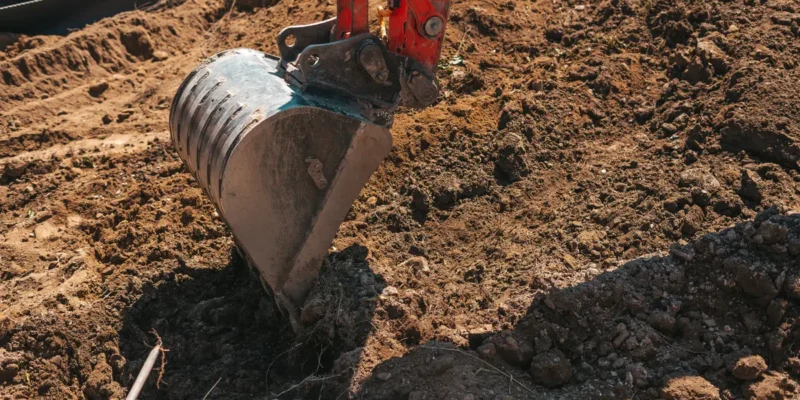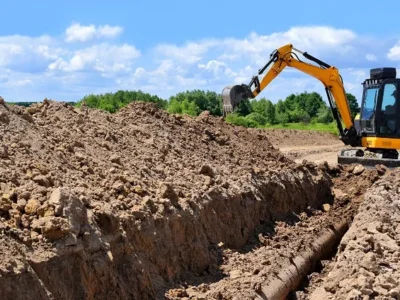Excavation projects are fundamental to the construction, mining, and infrastructure industries. Whether preparing land for a building foundation or digging trenches for utility installation, excavation requires precision, safety, and effective management. The success of any excavation project often depends on the level of planning put in place before the shovel hits the ground. This article explores how proper project planning influences excavation outcomes, detailing the critical steps and factors that contribute to a successful project.
1. Defining Clear Objectives and Scope
The foundation of any successful excavation project is a clear understanding of its objectives and scope. Without a precise definition of what needs to be accomplished, excavation projects are susceptible to errors, miscommunication, and unnecessary delays. Before work begins, project planners must work with stakeholders to establish clear goals. This includes identifying the location and size of the excavation, understanding the types of materials to be excavated, and recognizing any environmental or safety concerns.
Defining the scope allows project managers to anticipate challenges, allocate resources efficiently, and communicate expectations to the team. It also sets the framework for measuring progress and ensuring that the project stays on track.
2. Thorough Site Assessment and Preparation
An excavation project is only as successful as the site assessment that precedes it. A thorough site analysis involves understanding the geological makeup of the area, identifying underground utilities, assessing drainage needs, and factoring in environmental considerations. Site surveys can uncover obstacles that might not be visible on the surface, such as rock formations, unstable soil, or the presence of hazardous materials.
By conducting an in-depth assessment, planners can devise solutions to mitigate potential problems, allowing excavation to proceed smoothly. For example, knowing the location of underground utilities can prevent costly mistakes, while understanding the soil structure can inform decisions about the type of equipment needed. Proper site preparation also reduces risks related to safety and environmental impact.
3. Resource Allocation and Budgeting
One of the key components of any excavation project is resource management. This includes allocating the necessary equipment, labor, and materials in a way that maximizes efficiency and minimizes waste. Project planning allows managers to estimate the amount of machinery needed, the number of workers required, and the materials that need to be procured.
By carefully budgeting and forecasting, planners ensure that the project remains financially viable. A well-planned budget will take into account not only the direct costs, such as labor and equipment, but also indirect costs like permits, environmental fees, and unforeseen contingencies. Proper financial planning prevents cost overruns, which can severely impact the overall success of the excavation.
4. Timeline Development and Scheduling
Excavation projects are time-sensitive, and delays can have a cascading effect on the overall construction schedule. A well-structured timeline is crucial for ensuring that the excavation process is completed on time and in alignment with other phases of the construction project. Through detailed scheduling, project planners can allocate time for each step of the excavation, from excavation itself to site cleanup.
A comprehensive timeline should consider potential weather disruptions, equipment availability, and workforce capacity. By breaking the project into manageable tasks and assigning deadlines, planners can track progress, identify bottlenecks, and adjust resources as needed to ensure timely completion. An organized schedule also ensures that excavation crews are working efficiently without unnecessary downtime.
5. Risk Management and Safety Protocols
Excavation work inherently carries a level of risk. From cave-ins and equipment malfunctions to environmental hazards and worker injury, the potential for accidents is high. This makes risk management a vital part of project planning. Before any excavation begins, safety protocols and risk assessments must be established to ensure that workers and the surrounding environment are protected.
Proper planning involves identifying potential hazards and implementing measures to mitigate them. This includes ensuring workers have proper training, providing the necessary personal protective equipment (PPE), and having safety measures in place for emergency situations. Excavation sites should also be regularly inspected for safety compliance, with the project manager ensuring that workers follow established protocols. In addition, risk assessments can help minimize environmental damage, such as contamination of nearby water sources or disruption to local wildlife.
6. Regulatory Compliance and Permits
Excavation projects are governed by a range of local, state, and federal regulations. These regulations may pertain to safety, environmental impact, waste disposal, or even the preservation of historical or cultural landmarks. Project planning involves ensuring that all the necessary permits and approvals are obtained before excavation begins. Failing to secure the required permits can lead to delays, fines, or even the halting of the project.
The project planning phase must include a review of all relevant laws and regulations, including zoning laws, environmental guidelines, and safety standards. Once this is established, planners should engage with regulatory bodies to secure permits and confirm compliance with legal requirements. Staying ahead of compliance ensures that the excavation proceeds without legal complications.
7. Equipment Selection and Maintenance
Choosing the right equipment for an excavation project is a critical aspect of planning. The type of machinery used will depend on the specifics of the job, such as the depth of the excavation, the hardness of the soil, and the type of material being excavated. For instance, heavy-duty bulldozers and backhoes may be required for large-scale projects, while smaller trenchers might be sufficient for utility work.
Proper project planning involves assessing the equipment needs in advance and arranging for their availability throughout the project. This includes scheduling routine maintenance to ensure that the machinery operates efficiently and without failure. Well-maintained equipment reduces the risk of costly breakdowns, minimizing downtime and keeping the project on schedule.
8. Environmental and Community Impact Considerations
In today’s world, excavation projects are subject to increasing scrutiny regarding their environmental and community impact. Effective project planning takes into account the need for sustainability and environmental stewardship. This could involve monitoring soil erosion, protecting nearby water sources, or minimizing the disruption of local wildlife habitats.
Additionally, projects must consider the effect on the surrounding community, including traffic disruptions, noise, and dust. By anticipating these concerns, planners can take proactive steps to minimize disturbances, such as implementing dust control methods or designing temporary detours to avoid congestion. Community engagement and transparent communication also help to foster positive relations with the public, which can lead to smoother project execution.
The Path to Excavation Success
The success of any excavation project is determined by the level of planning and foresight involved. By clearly defining project objectives, thoroughly assessing the site, allocating resources effectively, developing realistic timelines, managing risks, ensuring compliance, and considering environmental and community impacts, project managers can ensure a smooth excavation process. Well-executed planning not only helps minimize risks but also maximizes efficiency, allowing for cost savings and timely completion. Through careful preparation and attention to detail, excavation projects are more likely to achieve the desired outcomes, benefiting both stakeholders and the surrounding environment.













Comments